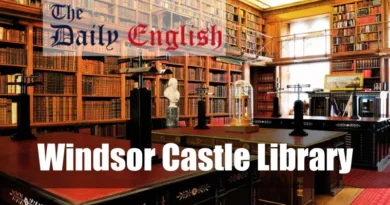Here is an informational table highlighting the key takeaways from the article about accessibility at Windsor Castle:
| Category | Key Takeaways |
|---|---|
| Location & Terrain | Windsor Castle is located on a steep hill, requiring uphill walking from the High Street to the Admission Centre and within the Castle grounds. The incline can be demanding despite paved paths. |
| Steps & Ramps | The Castle features numerous steps, particularly in areas like the State Apartments and St George’s Chapel. However, alternative step-free routes are available, with platform lifts managed by Castle Wardens providing access to key areas. |
| Platform Lifts | Lifts are available at crucial points, including the North Terrace and Inner Hall. They accommodate wheelchairs and have specific dimensions and weight limits (e.g., 232 cm x 145 cm, 630 kg). |
| Interior Access | Inside the Inner Hall, there are additional steps, with lifts available for step-free access to the State Apartments. A grand staircase of 28 steps leads to the State Apartments, but a nearby lift provides an alternative for those with mobility issues. |
| St George’s Chapel | The main entrance has 3 stone steps, but an alternative entrance with no steps is available. Inside, ramps are provided to navigate small sets of steps, with a one-way system guiding visitors. |
| Wheelchair & Scooter Access | Manual wheelchairs and rollators are available free of charge on a first-come, first-served basis. Visitors can use motorised wheelchairs and scooters if compatible with the lifts. |
| Shopmobility Services | A Shopmobility scheme near the Castle at Alma Road Coach Park offers scooter and wheelchair rentals, with free parking for those renting equipment. |
| Flooring & Surfaces | The Castle features thick carpets, polished wooden floors, and uneven cobbled surfaces, especially outside. St George’s Chapel has stone flooring. Visitors should exercise caution when navigating these surfaces. |
| Seating & Assistance Animals | Limited seating is available upon request in the State Apartments, with more seating in the Nave of St George’s Chapel. Walking sticks or folding stools are allowed. Assistance animals are welcome with proper identification. |
| Shops & Toilets | Shops within the Castle are accessible and located on one level with stone or carpet flooring. Accessible toilets are available in multiple locations, including a Changing Places toilet in Engine Court (RADAR key required). |
| Parking & Transport | Windsor Castle does not have on-site parking, but disabled parking bays are available nearby. The Castle entrance requires an uphill walk from these locations. |
| Refreshments | The Undercroft Café is accessible via platform lifts, offering refreshments during the visit. Food and drinks are not allowed in the State Apartments or St George’s Chapel. |
Windsor Castle features both steps and elevators (lifts) to accommodate visitors. The Castle is located on a steep hill, which requires walking uphill from the High Street to the Admission Centre and within the Castle grounds. Visitors will encounter several sets of steps, especially in areas like the State Apartments, but alternative step-free routes are available.
For those requiring accessibility options, Windsor Castle provides platform lifts and a main lift managed by Castle Wardens. These lifts are located at key points such as the North Terrace and the Inner Hall, ensuring that areas like the State Apartments are accessible without using stairs.
St George’s Chapel, located within the Castle, also has steps at the entrance, but an alternative entrance with no steps is available. Inside, ramps are provided to navigate any additional steps.
This combination of steps and lifts ensures that Windsor Castle can accommodate visitors with various mobility needs.

Mobility Access at Windsor Castle
Windsor Castle, a historic royal residence in England, presents unique challenges for visitors with mobility needs due to its location atop a steep hill and its centuries-old architecture. However, several accommodations and facilities are in place to assist visitors with different levels of mobility.
Accessibility Challenges and Solutions
- Steep Terrain: The Castle is situated on a hill, requiring visitors to walk uphill from the High Street to the Admission Centre and again once inside the castle grounds. The paths are paved, but the incline can be demanding. Caution is necessary as the access road is pedestrianised but may have occasional vehicle traffic.
- Steps and Ramps: Many areas within the Castle include steps, though alternative routes with step-free access are available. For instance, the entrance to the State Apartments requires ascending nine stone steps, followed by an additional 11 steps inside. A platform lift is available on the North Terrace for those requiring step-free access. This lift is managed by castle staff and can accommodate wheelchairs, measuring 232 cm wide by 145 cm long.
- Interior Access: Inside the Inner Hall, six more steps lead down to the State Entrance. A second platform lift is available here to assist those who cannot use the steps. This lift measures 95 cm by 139 cm and has a weight limit of 500 kg.
A grand staircase with 28 steps leads upwards for access to the State Apartments. However, a lift next to the Cloakroom, managed by the Wardens, provides step-free access. This lift can support up to 630 kg and measures 137 cm by 100 cm.
St George’s Chapel

St George’s Chapel, another highlight of the Castle, also poses some challenges for those with mobility issues. There are 3 stone steps at the main entrance, but an alternative entrance with no steps is available upon request. Several small sets of steps are equipped with ramps inside the chapel, and a one-way system guides visitors through.
Wheelchair and Scooter Access
Manual wheelchairs and rollators are free on a first-come, first-served basis. Visitors can also use motorised wheelchairs and mobility scooters inside and in the castle precincts, provided they are compatible with the lifts. The main lift, which accesses the State Apartments, has specific dimensions (137 cm deep by 100 cm wide) and a weight limit of 630 kg.
Shopmobility Services:
For those needing additional support, Windsor Castle is close to a Shopmobility scheme located at the Alma Road Coach Park. Here, mobility equipment such as scooters and wheelchairs can be rented, and free parking is provided when renting a scooter from this service.

Flooring and Surfaces
Windsor Castle’s flooring varies, with most rooms featuring thick carpets or polished wooden floors. St George’s Chapel has stone flooring; some outside areas are cobbled and uneven. Given the Castle’s age, visitors should take care when navigating these surfaces.
Seating and Assistance Animals
Upon request, limited seating is available in the State Apartments, and more seating is available in the Nave of St George’s Chapel. Visitors can also use walking sticks or folding stools with seat attachments. Assistance animals are welcome, provided they wear identification as working animals.
Shops and Toilets
The shops within Windsor Castle are fully accessible and located on one level with easy-to-navigate stone or carpet flooring. Accessible toilets are also available as you exit the Security Hall, on the North Terrace, and off the Inner Hall. A Changing Places toilet is available in Engine Court, which requires a RADAR key.
Parking and Transport
Windsor Castle does not offer parking on-site. However, there are disabled parking bays on the High Street, outside nearby restaurants, and along Park Street. The Castle’s entrance is a short, uphill walk from these locations.
Refreshments
The Undercroft Café provides refreshments and is accessible via platform lifts. Visitors can relax here during their visit, but it’s important to note that food and drinks are not allowed in the State Apartments or St George’s Chapel.
Conclusion
While Windsor Castle’s historic nature presents accessibility challenges, the Castle has made significant efforts to accommodate visitors with mobility needs. With the availability of lifts, alternative routes, and mobility aids, all visitors can enjoy many of the Castle’s attractions.
It is advisable to plan ahead and consider the specific needs of your visit to ensure a comfortable experience.









